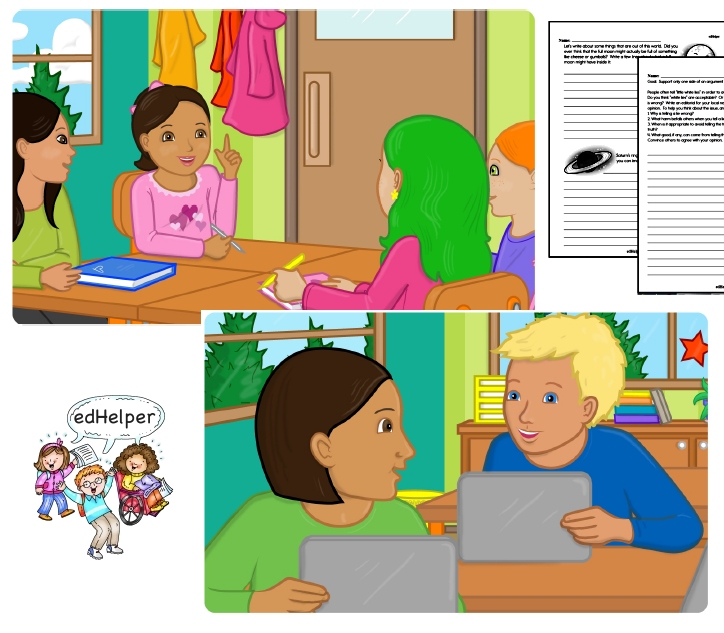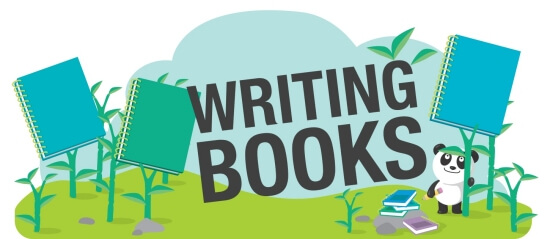The cat ran across the yard. It's true. That is exactly what happened. But wouldn't it be easier to picture if your student instead wrote and told you that "in less than the time it took to blink, the shadow had already sprinted from one side of the yard to the next. Without knowing exactly what he was after, it was obvious that Socks had his eye on the prize, and no amount of overgrown grass or spraying sprinkler was going to keep him from pouncing on his target"? There is a distinct difference in this writing. One tells; the other shows. How can you help your students become better writers, writers that evoke emotion, paint word pictures, and allow their readers to feel and experience rather than just read a series of words strung together on a page?
According to the National Assessment of Educational Progress, less than one-third of U.S. students are proficient writers. Whether it is for formal or informal communication, writing is a crucial skill. There are many ways to help your students become better writers, and we're here to share them with you. You are likely doing many of these things in your classroom already. A few small tweaks and a bit of intentionality can create purposeful shifts in supporting your students to grow in their writing skills.
For our students to grow into great writers, they need to be surrounded by great writing examples. Like all things in life, if we don't know what we're striving toward, it's hard to hit the target.
Focus on Great Authors - Becoming a better reader is often the first step in becoming a better writer. Reading the works of great writers develops critical thinking skills, exposes students to a variety of writing styles, sparks ideas, and can increase vocabulary. Inadvertently, great books and great writers become models that students emulate. This can be done as a series of classroom read-aloud sessions where a variety of different authors and genres are celebrated and studied. It can also be supported using a classroom or school library with special sections dedicated to award-winning, kid-friendly authors who will inspire students to write as well!
We can't improve what we don't practice. Providing students with daily time to write can help them develop into better creative and informed writers. Starting as young as first grade, students should have one hour per day set aside for writing. This can include time for explicit writing instruction, free writing time (such as journaling), and content area writing.
Monthly Writing Books - Wondering where to start? Monthly writing books serve as quick, no-prep writing guides for your students. Print and use these to inspire and support your students as they make time for daily practice. Alternatively, daily writing prompts and daily writing worksheets (that your students will actually want to do!) focus on grade-level appropriate writing skills and take the guesswork out of planning.
Free Writing Worksheets:
Kindergarten Writing Workbook
1st Grade Writing Workbook
2nd Grade Writing Workbook
3rd Grade Writing Workbook
4th Grade Writing Workbook
5th Grade Writing Workbook
6th Grade Writing Workbook
4th Grade Writing Prompts Worksheets Book
5th Grade Writing Prompts Worksheets Book
6th Grade Writing Prompts Worksheets Book
Online Options - Looking for additional ways to provide creative, fun, and engaging writing practice for your students? These twenty-five tips, tricks, and websites can help.
There is strong research to support the fact that while students can grow into better writers over time, they need explicit instruction to really flourish. Reading and writing on their own is not enough. Students need to be taught how to write, when to write, and what to write. They need to be taught the entire writing process, including brainstorming ideas, planning, creating a draft, revising, editing their work, and then publication in one form or another. The beginning and the end of the writing cycle seem to be the easiest for most students. They're willing to get started, and they can't wait to finish! But the real magic comes in the middle. These suggestions will help you not only to instruct your students but also to help them find their inspiration.
Cultivate Curiosity - Before students are ready to write, they need to have something to write about. Capitalizing on their curiosity can help! Create a classroom that celebrates students' awareness and constant curiosity. Consider using a "turn-and-talk" strategy where students regularly turn to a neighbor and finish sentences such as "I notice that..." Or "I wonder why..." as you cover different topics and subject areas throughout the day. Later, when it's time to write, it will be much easier for curious students to get started. Those wonderings and observations will easily become something that students can write about.
Examine Examples - As you prepare a new writing project, take time to work through several solid examples together as a class before expecting your students to tackle the project on their own. Use exemplary samples and have the class identify the parts of the writing that make the piece strong: Does it have great adjectives? Is there a solid claim with supporting details? Is the piece persuasive? Does the author meet its goal and communicate well with the audience? Likewise, look at pieces that aren't as successful. Provide opportunities to identify what the authors could do to improve future work.
Explicit Instruction - There is a time and a place for inventive spelling and simply getting thoughts on paper, but to grow as writers, students need some explicit instruction.
Sentence Construction - Students need to learn how to construct sentences that make sense. They need to be taught the placement of nouns, verbs, adjectives, and correct punctuation. This type of explicit instruction can be part of your morning bell work or introduced as part of a mini lesson at the beginning of your writing block.
Word Choice - Do you have a list of dead words in your classroom? One way to help our students grow in their writing abilities is to create a list of forbidden writing words. Instead of "said," have students choose from alternatives like exclaimed, shouted, whispered, cried, hissed, or yelled. Help your students begin to focus on words that allow a reader to really feel or experience what is happening in the piece. Sensory words do this as well. When students use sensory words, words that include the five senses of taste, smell, touch, sight, and sound, they can add great details to their writing. Have students create a table with 5 columns. Next, have them label each column with a sense. Finally, have them brainstorm different words that could describe that sense. This reference chart will allow them to spice up their initial drafts and revise their writing. Rather than eating "good" ice cream, they may instead rush to enjoy the creamy-sweet treat before the same blazing mid-day sun causing the beads of sweat to drip down their back melts that delicious soft-serve.
Review and Revise - There is a distinct difference between revising writing and editing writing. Oftentimes, teachers tend to combine the two. We ask students to revise and edit their work at the same time. If you really want to help your students become better writers, it is important to honor each stage as its own. The revising stage is where students, their peers, and you as the teacher can help them improve their writing. This stage and strategy need to be explicitly taught. This is the stage where students can rearrange their work to help improve the clarity of their ideas and to spice up their work by removing unnecessary sentences or overly used words and substituting them with more powerful synonyms. The revision stage also allows students to add additional details that will make their work more appealing to the reader. Students need to know what to look for when improving their own writing and how to talk to one another when suggesting improvements for classmates' work. Conversation templates or sentence stems can help frame peer revising conversations.
Find and Fix - The editing stage can arguably be many students' least favorite part of the writing process. Very few of us enjoy making mistakes, and editing is all about fixing mistakes. Oftentimes, students struggle to correct mistakes because they didn't realize they'd made a mistake in the first place. Besides having mini-lessons as part of your writing block, the editing process will be easier if your students have rubrics, interactive grammar journals, and anchor charts with grammar rules to guide them. As your students write initial drafts, encourage them to skip lines or leave intentional space for editing marks. You can also make editing a bit like a game; rather than expecting students to fix all the mistakes at one time, send them on a treasure hunt to first look for misspelled words, then capitalization, followed by missing punctuation marks. Have them edit using different colored pencils, ink pens, or a set of special erasers. Why not create a coffeehouse atmosphere with acoustic music as students work like "real" writers to improve their pieces? The possibilities are endless!
Finally, yet perhaps most importantly, be intentional about creating a classroom where students want to share their writing with you and with one another. Model vulnerability by being willing to share your writing with them. You may want to create open mic afternoons where students can take the stage and share what they've been working on. Ultimately, creating a safe space where students can share their writing increases student motivation, which leads to growth. Student writing, no matter the current level of proficiency, can be celebrated! Each step of the writing process may not feel fun, but when students find the praise of their peers (and their teachers!) as they share their work, they are more likely to continue growing in their writing so that they can share again!
The world is constantly changing, but one thing remains the same: communication is key! Helping our students become better writers will ultimately help them become better communicators. Writing allows students to think creatively, express emotions, communicate opinions, critically analyze data, and write corresponding reports. Perhaps most importantly, helping your students grow into better writers will ensure that they are ready to write you a heartfelt message filled with their favorite school year memories in the back of this year's yearbook. Writing may be a work of art, but teaching is a work of heart! Keep up the great work, teachers!













